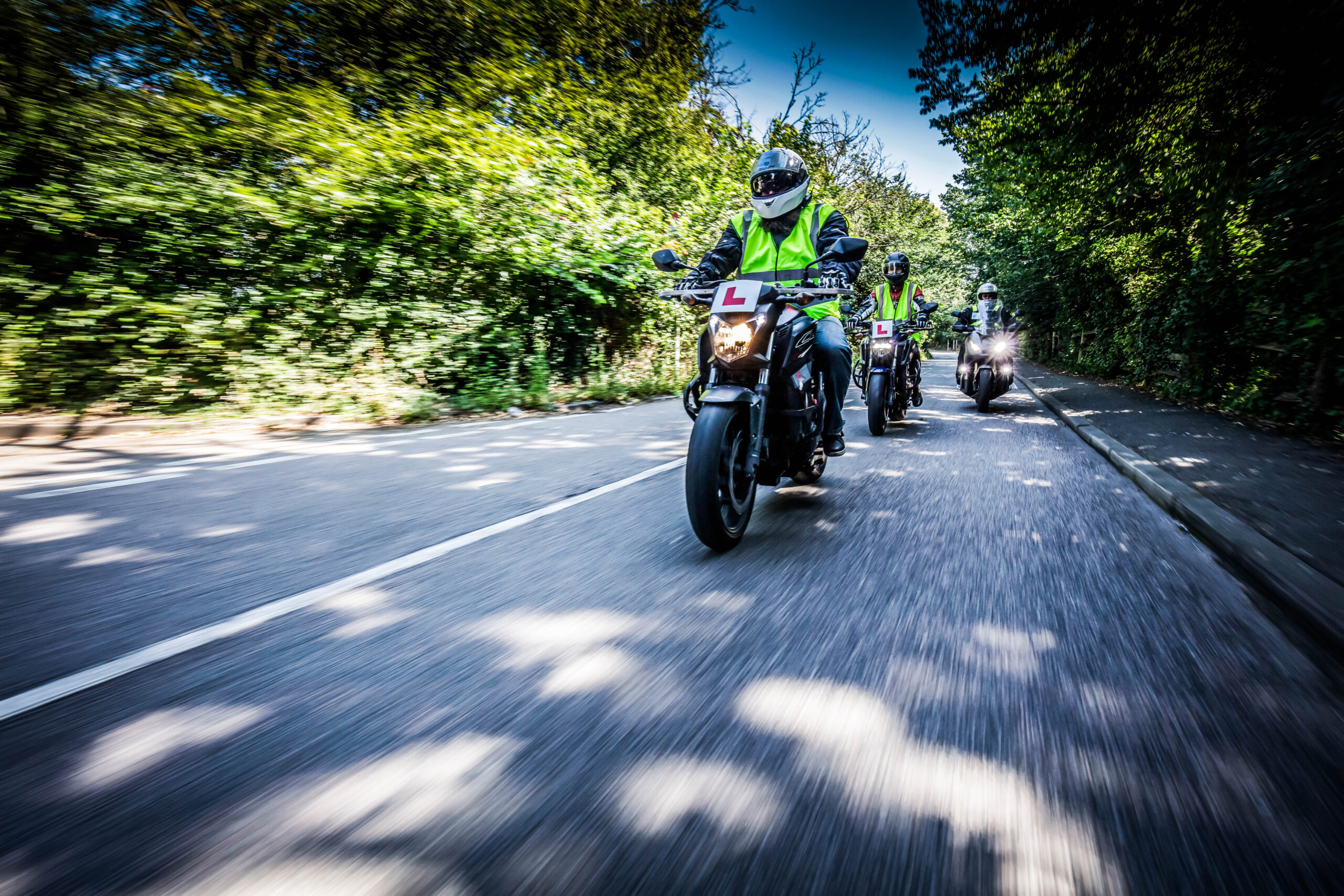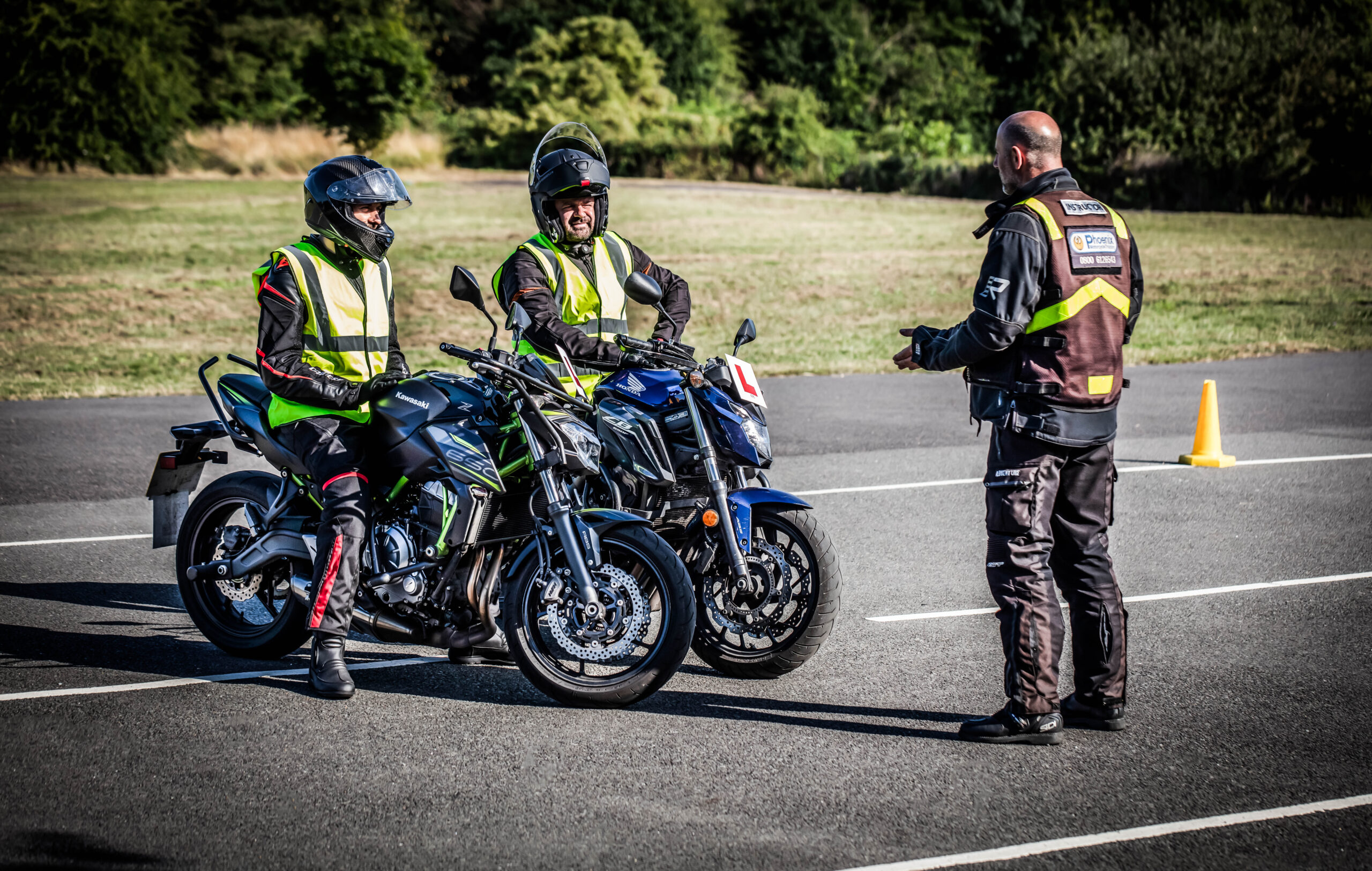
Beyond Compulsory Basic Training (CBT)
Learn Delivery Rider Skills to be safer on the road
Beyond CBT: Skills for Delivery Riders is a free course designed to promote best practices and develop delivery rider skills for working in busy urban environments.
The overarching objective of the course is to ensure riders can safely handle a motorcycle (up to 125cc) to transport freight safely and legally in the London area.
The aims of this course are to:
- Equip riders with the necessary road knowledge and skills to make deliveries safely in busy urban areas
- Equip riders with the skills required to ride safely on urban roads, including how to filter, overtake and when to ride in bus lanes
- Improve riders’ hazard perception and defensive riding skills
- Promote the appropriate use of personal protective equipment (PPE)
- Help riders to understand the need to ride at speeds appropriate to the road conditions
Beyond CBT will be available to anyone who can prove they hold a valid DL196 CBT certificate and works in the courier/delivery industry and needs further training to improve their knowledge and skills.
Other people interested in becoming delivery riders may also be eligible for the free Beyond CBT training to develop their delivery rider skills in advance of employment. New CBT holders should book and attend the training within seven days of completing their CBT training. The Service Provider must also consider them as competent for them to be accepted on the course.
Beyond CBT is available only to people who live, work or study in any of the 33 London boroughs. If you’d still like to take the Beyond CBT course to develop your riding skills further, you will be able to. However, the TfL won’t cover the cost of the course on your behalf.
Course Details
- Duration: The day’s training session will last for a duration of 7 hours.
- Cost: FREE OF CHARGE
- Location: Crystal Palace, London SE19, or Croydon CR0 0TF, or Sidcup DA14 5ED
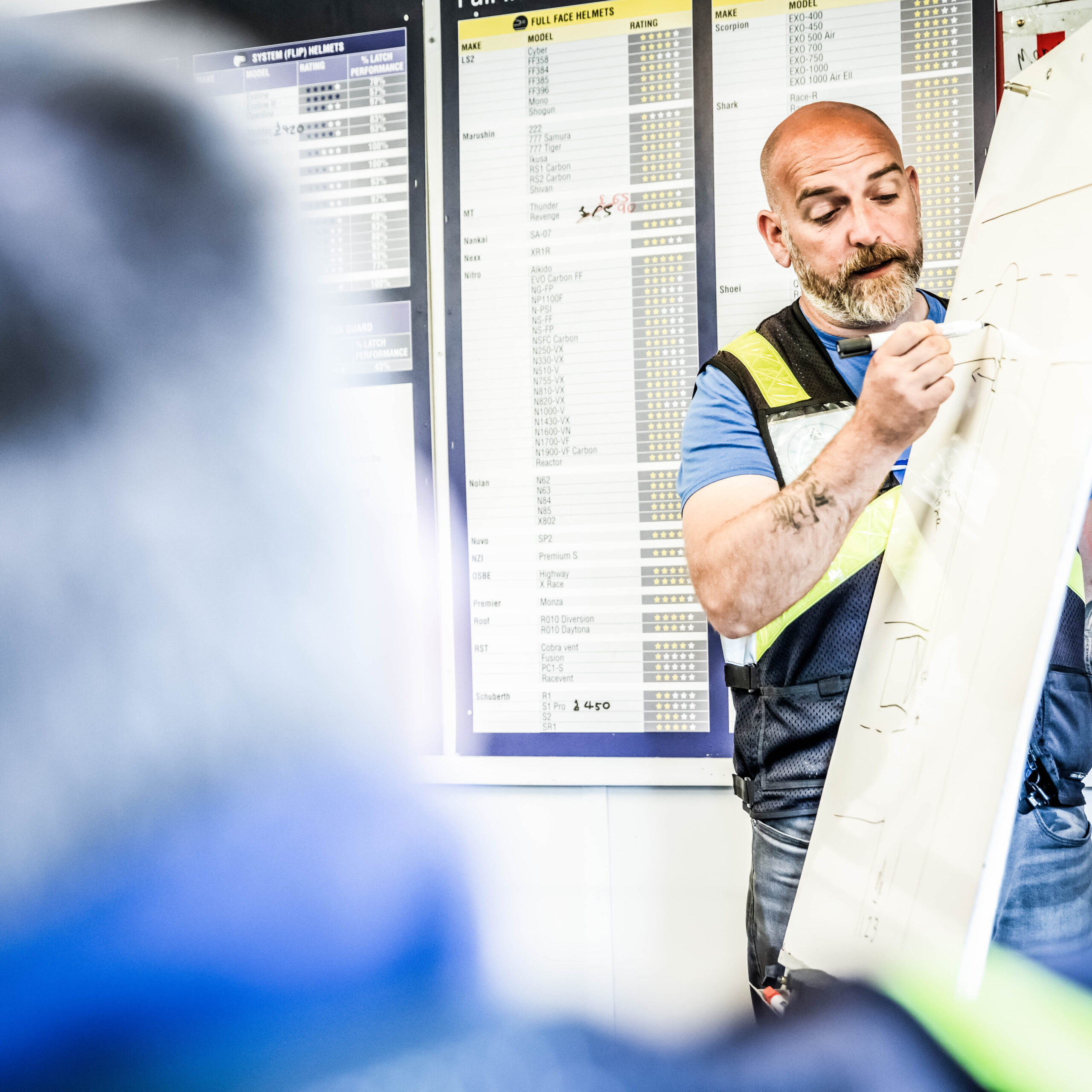
How the course works
Part 1 – Meet and Greet
The instructor will meet students at a Phoenix Motorcycle Training MCIAC-approved training site.
They’ll introduce themself, discuss and agree with you the aims of the course:
- Promote the appropriate use of personal protective equipment (PPE)
- Equip riders with the necessary road knowledge and skills to make deliveries safely in busy urban areas
- Equip riders with the skills required to ride safely on urban roads, including how to filter, overtake and when to ride in bus lanes
- Improve riders’ hazard perception and defensive riding skills
- Help riders to understand the need to ride at speeds appropriate to the road conditions
The instructor will carry out a verbal risk assessment with the student, ensure that the student’s bike is roadworthy and also that they have the correct documentation/equipment:
- A valid driving licence with an up-to-date CBT completion certificate (if need)
- Appropriate insurance for their motorcycle (digital version or copy is acceptable), if applicable
- A valid MOT certificate (where relevant), if applicable
- ‘L’ plates if riding on a CBT certificate, if applicable
- Is wearing mandated and suitable PPE (suitable safety helmet, trousers, appropriate footwear- no sandals or flip-flops allowed)
Students must sign a training disclaimer stating they are physically and mentally fit to join the training and confirm they hold a valid driving licence. In cases where students are riding their own machine, they’ll confirm they have insurance, road tax, MOT (if needed), and that to the best of their knowledge, their motorcycle or scooter is roadworthy.
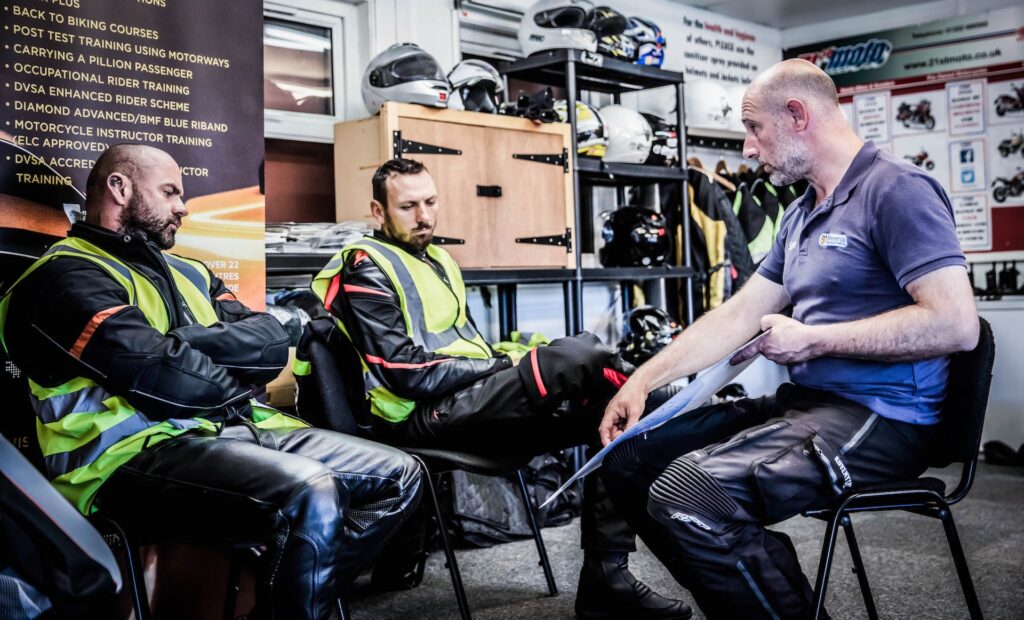

Part 2 – Classroom Based – Introduction/Initial Discussion
As part of the initial steps, the instructor will constructively discuss with students:
- Course introduction and layout
- Highway code quiz (to be given to the trainee and done in class)
- Discuss C.O.A.S.T and create a hazard drill
- Common London road features / Bus lanes / Parking rules
- Motorcycle pre-ride checks and minor servicing
- Puncture repair – (theory)
- Secure and ride with various load weights and sizes (carrying goods size/weight ratios, items not allowed, etc.)
- Familiarise yourself with the SAT Nav system TomTom 400
- Plan and execute routes in a busy urban area delivering to different locations: Part 4/5
- Protective equipment/clothing with the rider and may suggest changes/improvements.
Part 3 – Onsite Training
- Students will be asked to demonstrate practical knowledge of the use of controls and basic maintenance checks of the machine
- Riding on a straight line and bringing the vehicle to a halt
- Left/Right Turns
- Moving off, controlled braking and use of rear observation (mirrors and life savers) exercise
- Slow ride exercise
- Figure of 8
- U-turn
- Emergency stop
- OSMPSL Routines
Part 4 – Classroom Based – Road Briefing, Highway Code, Riding Techniques Discussion
Constructive discussion aided by a presentation.
After the presentation, the instructor will provide a short road briefing to students for safety purposes, and then once the go-ahead is given by the instructor, the initial assessment ride will commence.
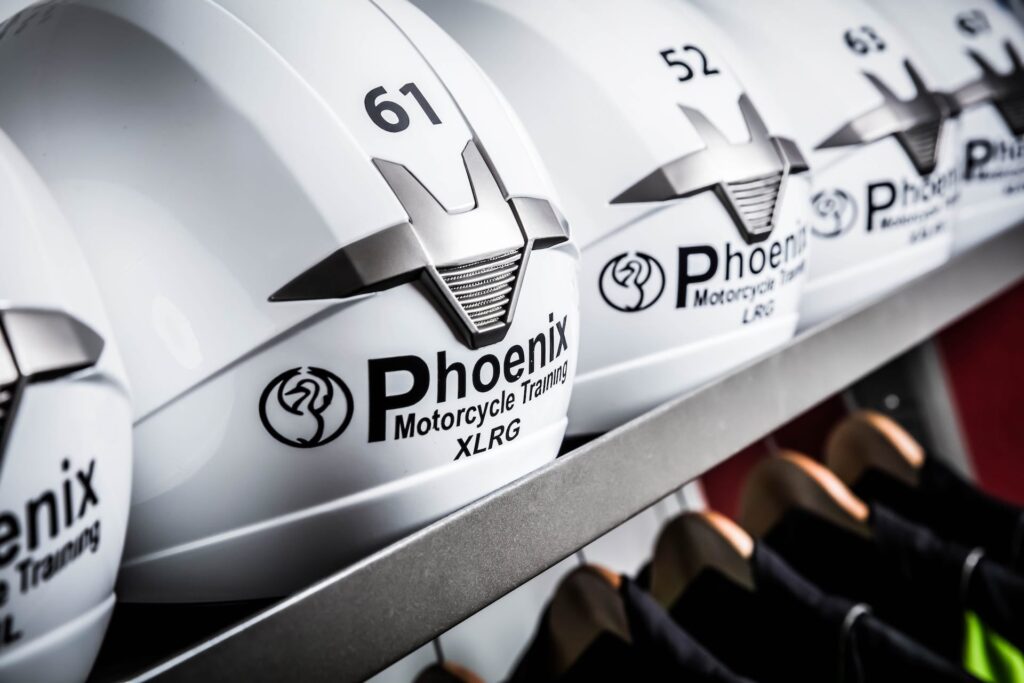
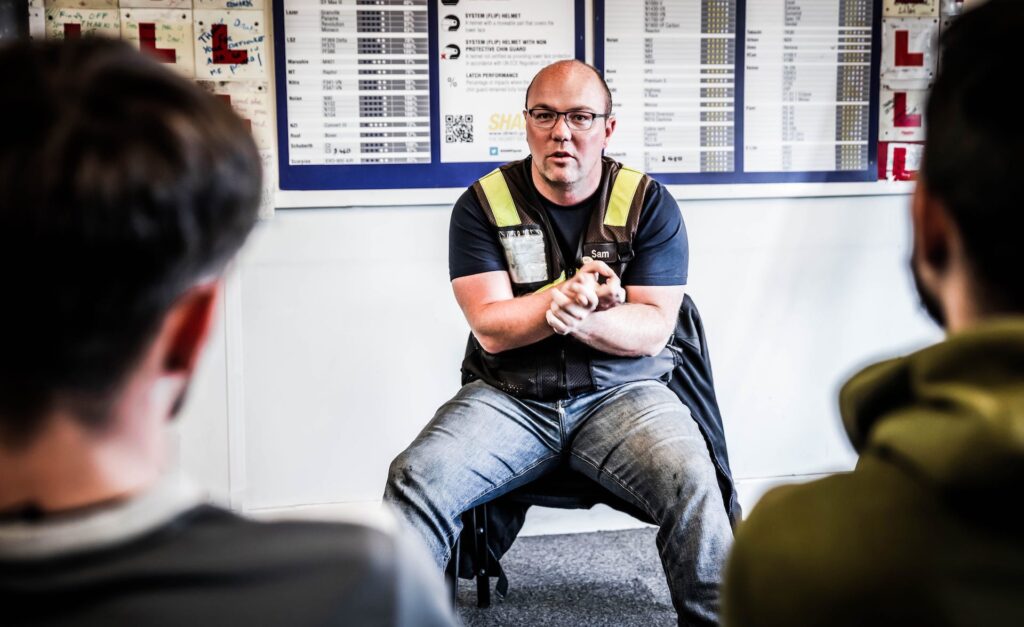
Part 5 – The Assessment Ride
The assessment ride will consist of the instructor following the student and analysing their riding skills on a public road, including (if possible), but not limited to:
- Normal Road Positioning
- Separation Distance
- Appropriate Use of Speed
- Use of Observations
- Use of Mirrors
- Road Attitude
- Junction Approach Procedures (e.g. OSMPSL)
- Roundabout Procedures (mini, standard, multi-lane, etc.)
- Reaction to Other Road Users
- Progress / Hesitancy
- Corners / Bends
- Motorways / Dual Carriageways (if available/allowed, e.g. full motorcycle licence, etc.)
The trainer will provide feedback to the student as the ride progresses via radio/stops, using video and other training aids where relevant.
Part 6 – Conclusion Session – Classroom Based
At the end of the session, the instructor will provide both verbal and written feedback to students.
Finally, a Certificate of Completion will be issued on behalf of Transport for London


